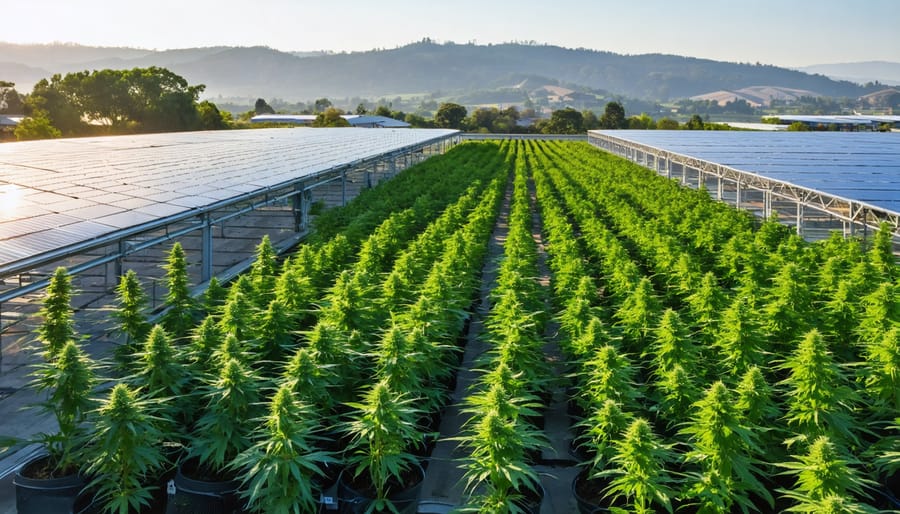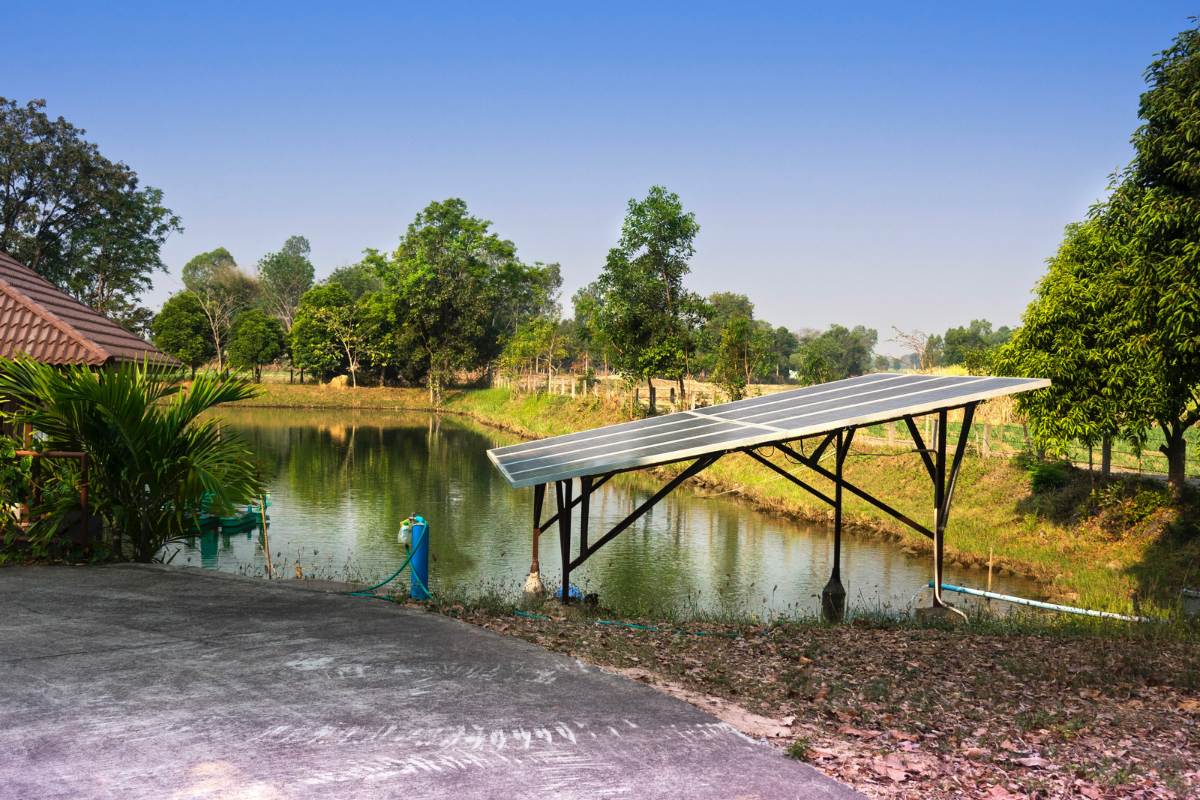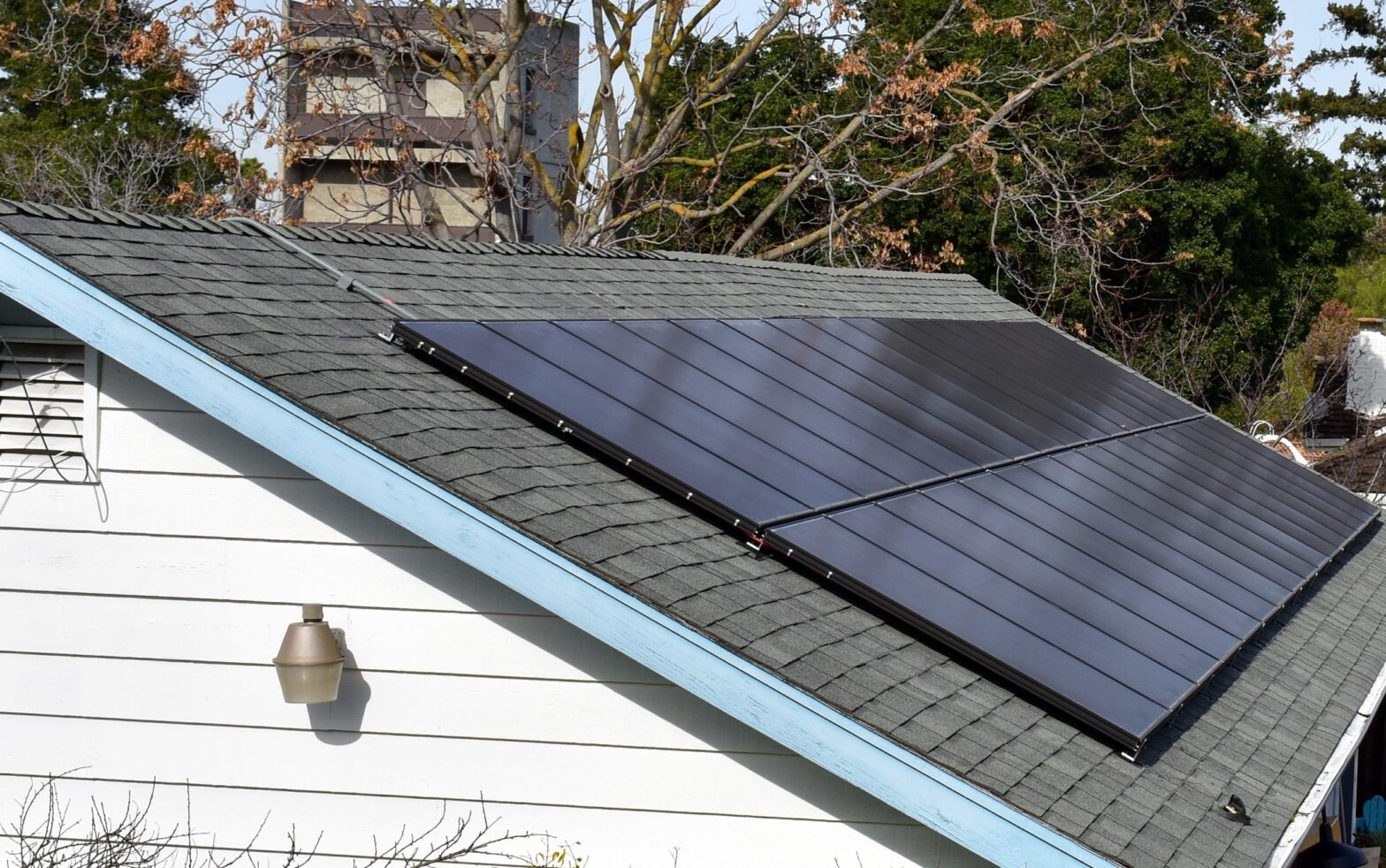Solar Energy Could Transform Cannabis Production Into a Climate Solution
The cannabis industry stands at a crossroads where environmental responsibility meets unprecedented growth opportunity. As Delta 9 THC production expands across North America, cultivators are consuming staggering amounts of electricity—enough to power entire neighborhoods—while communities worldwide are demanding cleaner, more sustainable manufacturing practices. Solar-powered production isn’t just an environmental ideal; it’s becoming an economic imperative that’s reshaping how we grow, process, and distribute cannabis products.
Traditional indoor cannabis cultivation requires intense lighting, climate control, and ventilation systems that generate massive carbon footprints. A single indoor grow facility can use as much electricity as 29 average homes annually. Yet pioneering cultivators are proving that solar energy can meet these demanding power needs while reducing operational costs by 40-70% over time. From California’s sun-drenched valleys to Colorado’s high-altitude operations, solar-powered cannabis facilities are demonstrating that sustainability and profitability aren’t opposing forces—they’re complementary pathways to industry leadership.
This transformation carries profound implications beyond individual businesses. Communities historically marginalized by cannabis prohibition now have opportunities to participate in an industry built on clean energy principles rather than extractive practices. Solar-powered production creates local jobs in renewable installation and maintenance while keeping energy dollars circulating within communities rather than flowing to utility corporations.
The convergence of falling solar costs, rising electricity rates, and consumer demand for ethical products has created a perfect moment for change. The question isn’t whether cannabis production will transition to renewable energy—it’s whether your community will lead this transformation or follow from behind.
Understanding Delta-9 THC: The Science Behind Cannabis’s Primary Compound
Why Delta-9 Production Methods Matter for Our Climate
The cannabis industry stands at a crossroads. As Delta-9 THC production expands across the nation, we’re witnessing an environmental cost that demands our attention. Traditional indoor cultivation facilities consume staggering amounts of electricity—equivalent to powering entire neighborhoods—primarily for artificial lighting, climate control, and dehumidification systems. Studies show that indoor cannabis operations can use up to 2,000 kilowatt-hours of energy per pound of product, generating significant carbon emissions and straining local power grids.
This energy intensity isn’t just about numbers on a utility bill. It represents a choice about our collective future. Every grow operation powered by fossil fuels contributes to climate change, affecting the same communities many cannabis businesses aim to serve. Low-income neighborhoods and communities of color already bear disproportionate impacts from air pollution and energy infrastructure decisions.
But here’s the inspiring truth: we have proven alternatives. Across the country, pioneering cultivators are demonstrating that Delta-9 production doesn’t have to harm our planet. By embracing solar power and renewable energy solutions, these trailblazers are proving that environmental responsibility and quality production go hand-in-hand. Their success stories show us that sustainable cannabis cultivation isn’t just possible—it’s practical, profitable, and essential for protecting the communities we call home. The question isn’t whether we can transform this industry’s environmental impact, but whether we’ll seize this moment to lead the way.
The Hidden Energy Crisis in Cannabis Cultivation
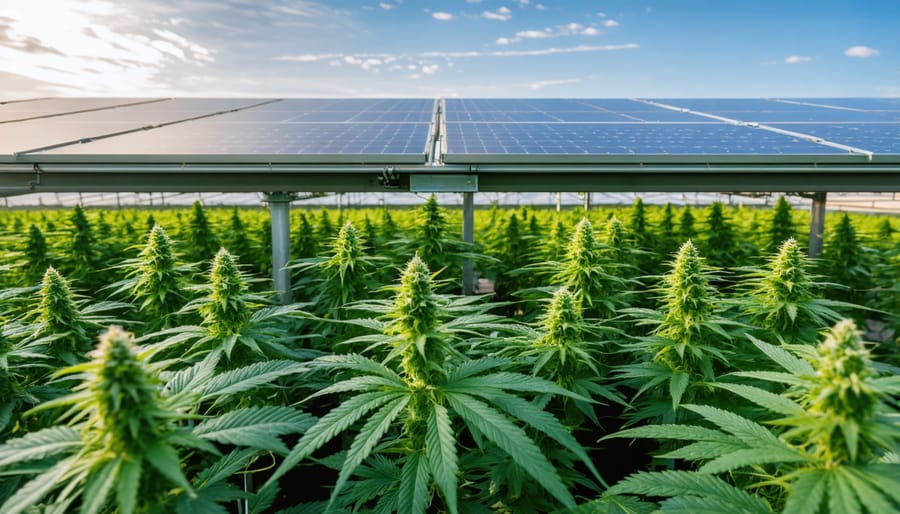
How Indoor Growing Became the Industry Standard
For decades, cannabis cultivation moved indoors out of necessity, not choice. When prohibition forced growers into the shadows, they discovered that controlled indoor environments offered a silver lining—consistent, high-quality yields regardless of season or climate. This wasn’t just about hiding; it was about survival and meeting exacting standards that outdoor growing couldn’t guarantee under legal uncertainty.
As legalization swept across states, indoor cultivation became the industry standard for compelling reasons. Regulatory frameworks demanded rigorous quality control, including precise cannabinoid profiles and freedom from contaminants. Indoor facilities could deliver this consistency, protecting public health while building consumer trust in newly legal markets. Climate control eliminated mold risks, pest management became more manageable without pesticides, and year-round production stabilized supply chains.
However, this path to legitimacy came with an environmental cost few anticipated. Those same controlled environments require enormous energy inputs—powerful grow lights mimicking sunlight, industrial HVAC systems maintaining perfect temperatures, and dehumidifiers running continuously. Today’s indoor cannabis facilities consume electricity comparable to data centers, creating a carbon footprint that contradicts the plant-based, earth-conscious values many in the community hold dear.
The good news? We’re now at a pivotal moment where we can honor the quality standards that indoor growing established while reimagining how we power these operations. Communities across the country are proving that sustainable cultivation isn’t just possible—it’s the future.
The Real Cost to Communities and the Climate
The energy choices made by cannabis producers ripple far beyond their facility walls, touching the lives of neighbors, straining local infrastructure, and intensifying the climate crisis we all share. In communities across the country, particularly those still reliant on coal and natural gas for electricity, conventional Delta-9 THC production facilities contribute to a cascade of challenges that disproportionately affect those least equipped to bear them.
When cultivation operations draw heavily from fossil fuel-dependent grids, they accelerate the degradation of air quality in surrounding neighborhoods. The additional carbon emissions don’t just contribute to abstract global warming statistics—they translate to higher asthma rates in nearby schools, increased cooling costs for fixed-income families during heat waves, and intensified storm damage in vulnerable communities. In states like West Virginia and Wyoming, where coal still dominates the energy mix, each kilowatt-hour consumed by indoor cannabis operations carries a heavier environmental burden that local residents breathe every day.
The strain on utility infrastructure tells another story of inequity. As energy-intensive cannabis facilities connect to aging grids, utilities often pass upgrade costs onto all ratepayers through increased fees. Low-income households, already spending a disproportionate share of their income on energy bills, shoulder this burden without benefiting from the economic opportunities these facilities create. Rural and indigenous communities frequently experience the most severe impacts, facing both environmental degradation and economic displacement.
Yet this reality isn’t inevitable. Communities from Oakland to Denver have demonstrated that when cannabis producers embrace solar power, they become partners in building local resilience rather than contributors to community stress. These success stories prove that clean energy isn’t just an environmental necessity—it’s a pathway to justice and shared prosperity.
Solar-Powered Cannabis: A Growing Movement Toward Sustainability
How Solar Technology Meets Cannabis Production Needs
Cannabis cultivation has traditionally demanded enormous amounts of electricity—for lighting, climate control, ventilation, and security systems that run around the clock. But solar technology has evolved to meet these intensive needs in remarkably practical ways, and facilities across the country are proving it works.
Modern solar arrays can generate substantial power even in varied climates, with photovoltaic panels converting sunlight into electricity that directly powers grow lights and environmental controls. The real breakthrough comes from pairing solar panels with advanced battery storage systems. These batteries store excess energy produced during peak sunlight hours, ensuring cultivation facilities maintain consistent power throughout the night and during cloudy periods—critical for cannabis plants that require precise lighting schedules.
Smart energy management systems tie everything together, acting as the facility’s brain. These systems monitor energy production and consumption in real-time, automatically drawing from solar power when available, tapping battery reserves when needed, and even connecting to the grid as a backup. This intelligent orchestration means growers never compromise plant health while maximizing clean energy use.
In California’s Central Valley, a mid-sized cultivation facility reduced its grid dependence by 75% after installing a solar-plus-storage system. The operation now powers its entire vegetative growth phase with stored solar energy, demonstrating that holistic energy solutions can meet cannabis production’s demanding requirements.
The technology isn’t experimental—it’s proven, scalable, and increasingly affordable. As equipment costs decline and efficiency improves, solar-powered cultivation becomes accessible to operations of all sizes, from boutique growers to large-scale producers. The question isn’t whether solar can power cannabis production, but rather how quickly we can make this transition standard practice.
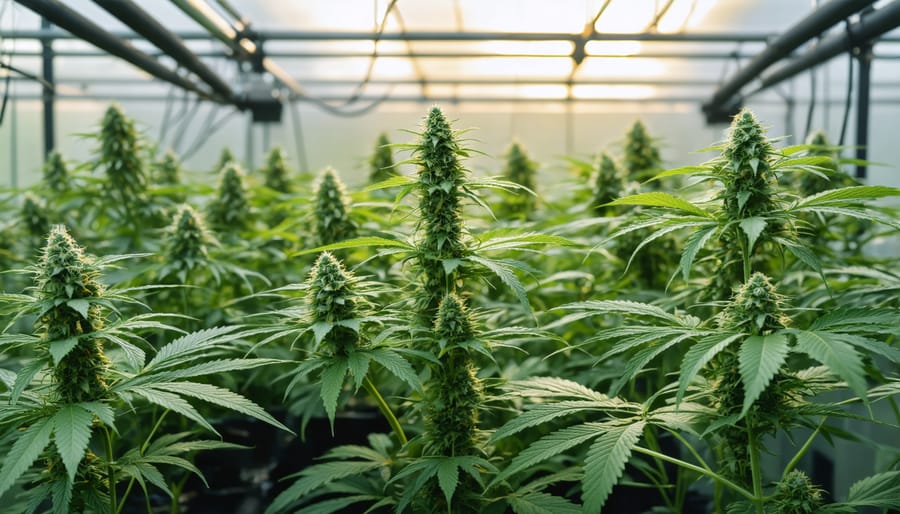
Pioneering Growers Leading the Clean Energy Transition
Across the country, forward-thinking cannabis cultivators are proving that sustainable Delta-9 THC production isn’t just possible—it’s profitable and transformative for entire communities.
Take Sunbelt Cannabis Collective in New Mexico, a cooperative of twelve family-owned farms that converted to 100% solar power in 2022. Within eighteen months, they reduced their collective energy costs by 68% while creating twenty-three new jobs in solar installation and maintenance. Their success extends beyond their greenhouses: excess power generation now supports a community center offering free environmental education workshops to over 500 residents annually. “We’re not just growing medicine,” explains co-founder Maria Santos. “We’re growing a cleaner future for our children.”
In Oregon, Green Horizon Farms transformed a struggling 40-acre operation into a thriving solar-powered model that processes 15,000 pounds of biomass monthly. Their rooftop and ground-mounted arrays generate 850 kilowatts—enough to power cultivation, extraction, and packaging while returning surplus energy to the grid. Most remarkably, they’ve shared their blueprint freely with seventeen other growers, catalyzing a regional movement. Their transparent approach has created a ripple effect: local energy costs have decreased, and three previously closed manufacturing facilities have reopened as solar-powered cannabis operations, bringing 140 jobs back to rural communities.
Michigan’s Sovereign Roots Cooperative, a tribal-owned enterprise, demonstrates how solar integration advances both environmental and economic sovereignty. Their 1.2-megawatt solar array powers full-spectrum LED cultivation systems, reducing grid dependence by 92%. The operation has generated $2.3 million in energy savings over three years, funds redirected toward healthcare services and educational scholarships for tribal members.
These pioneers share a common thread: they recognized that sustainability isn’t a burden—it’s an opportunity. Their measurable outcomes prove that clean energy transitions strengthen communities, create meaningful employment, and establish cannabis cultivation as a force for environmental restoration rather than degradation.
The Economic Case for Solar Cannabis Production

Breaking Down the Investment and Payback Period
The transition to solar-powered cannabis production requires an honest conversation about investment. While upfront costs for commercial solar installations typically range from $100,000 to $500,000 depending on facility size, the story doesn’t end there—it begins.
Consider the example of Green Horizons Cultivation in Colorado, which faced a $250,000 initial investment for their solar array. Within eighteen months, their energy bills dropped by 70%, creating immediate operational breathing room. The federal Investment Tax Credit (ITC) covered 30% of their installation costs, while state-level incentives added another $40,000 in savings. Their payback period? Just under six years, with a system designed to operate efficiently for twenty-five years or more.
Today’s financing landscape makes this transition accessible to operations of all sizes. Power Purchase Agreements (PPAs) allow facilities to adopt solar with zero upfront costs, paying only for the clean energy generated—often at rates lower than traditional utilities. Community solar programs and green financing cooperatives are opening doors for smaller producers who thought solar was beyond reach.
The numbers tell a compelling story: after the payback period, facilities enjoy decades of virtually free energy, insulating themselves from volatile utility rates while demonstrating environmental leadership. When we invest in solar today, we’re not just reducing costs—we’re building resilient, community-centered businesses that prove sustainability and profitability grow hand in hand.
Policy Pathways: Creating Incentives for Clean Cannabis
What Communities and Advocates Can Do Now
The cannabis industry’s environmental impact is no longer someone else’s problem—it’s a shared opportunity for communities to lead on climate action. Whether you’re a policymaker, community leader, or advocate, you have the power to shape a cleaner, more equitable future for cannabis production right now.
Start by demanding that solar requirements become standard in cannabis licensing. Cities and counties can update their ordinances to prioritize applications that demonstrate renewable energy commitments. Massachusetts has already shown this works, with several municipalities requiring energy efficiency plans before issuing permits. Push your local planning boards to follow this example, incorporating solar readiness into zoning and conditional use permits for cultivation facilities.
Build coalitions that connect cannabis industry stakeholders with clean energy advocates. These partnerships amplify impact—when solar installers, cannabis operators, and environmental justice groups work together, they create compelling cases for policy change. Support solar advocacy efforts that protect renewable energy access for all industries, not just cannabis.
Advocate for renewable energy legislation that includes cannabis-specific incentives. Contact state representatives about tax credits, expedited permitting, and technical assistance programs for solar-powered cultivation. Highlight the economic benefits—job creation, reduced operating costs, and energy grid stability.
Community leaders can facilitate knowledge-sharing sessions where solar-powered operators share their success stories with prospective license holders. Create toolkits with financial modeling, installer recommendations, and policy templates that make adoption easier.
Most importantly, center environmental justice in every conversation. Ensure that solar transitions benefit communities most impacted by both cannabis prohibition and energy pollution. This isn’t just about greener cannabis—it’s about building power, creating opportunities, and protecting our shared climate future, one facility at a time.
Building an Equitable Solar-Powered Cannabis Future
The transition to solar-powered cannabis production presents a transformative opportunity to right historical wrongs while building a more sustainable future. For too long, communities of color and low-income neighborhoods have borne the dual burden of mass incarceration from cannabis prohibition and disproportionate exposure to environmental hazards from fossil fuel pollution. As we reimagine cannabis cultivation powered by clean energy, we must ensure these same communities stand at the center of this economic and environmental revolution.
True equity in solar cannabis means more than simply replacing one energy source with another. It requires intentional policies and programs that provide marginalized entrepreneurs with access to capital, training, and solar technology. Several pioneering initiatives are already showing the way forward. In Oakland, California, the Equity Permit Program combines cannabis business licensing for those impacted by the war on drugs with technical assistance for implementing renewable energy systems. Participants receive support navigating both cannabis regulations and solar installation, transforming barriers into bridges toward economic opportunity.
Similarly, community solar projects are emerging as powerful tools for democratizing clean energy access. These shared solar arrays allow multiple cannabis cultivators—especially smaller operators without suitable rooftops or capital for individual installations—to benefit from solar power through subscription models. This approach mirrors successful low-wealth solar policy frameworks that prioritize affordability and accessibility over market-rate returns.
The path forward demands collaboration between policymakers, cannabis industry leaders, solar providers, and community organizations. Licensing structures should prioritize social equity applicants and reward sustainable practices with expedited permitting or reduced fees. Financial institutions must develop innovative lending products that recognize the unique position of equity cannabis entrepreneurs. Workforce development programs can train community members for careers in both solar installation and cannabis cultivation, creating lasting employment opportunities.
When we center equity in the solar cannabis transition, we don’t just reduce carbon emissions—we build wealth in communities that have been systematically excluded, heal environmental injustices, and demonstrate that climate solutions and social justice are inseparable. This is our moment to ensure that the green future we’re creating is truly green for everyone.

The convergence of solar energy and Delta-9 THC production represents more than an innovative business practice—it’s a powerful statement about the future we choose to build together. As communities across the nation witness the tangible benefits of cannabis operations powered by clean, renewable energy, we’re seeing living proof that environmental responsibility and economic opportunity can flourish side by side. From California greenhouses that have slashed their carbon footprints by 70% to Colorado facilities creating skilled green jobs in formerly underserved neighborhoods, these success stories illuminate a pathway forward that honors both our planet and our people.
The transformation won’t happen without your voice and action. We need champions at every level—from consumers demanding transparency about how their products are made, to policymakers crafting incentives that prioritize solar adoption in cannabis licensing, to community leaders ensuring these opportunities reach those most impacted by both environmental degradation and past cannabis prohibition. Every choice to support sustainably produced Delta-9 THC sends a market signal that reverberates through the industry. Every call to your representative requesting renewable energy requirements for cannabis cultivation shapes the regulatory landscape. Every conversation you have about clean energy possibilities plants seeds of change.
Join the coalitions already doing this vital work. Connect with local environmental justice groups, renewable energy advocacy networks, and cannabis reform organizations committed to sustainability. Together, we’re not just greening an industry—we’re demonstrating that the clean energy transition can be equitable, profitable, and community-driven. The power to create this future is quite literally in your hands.

